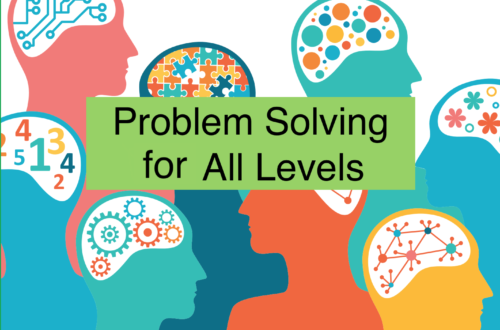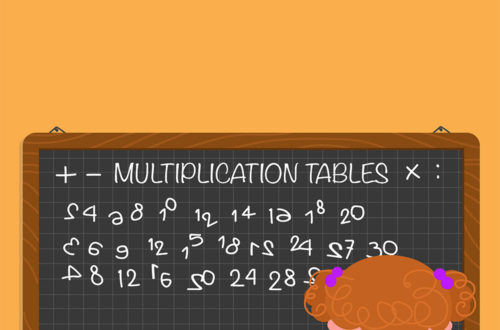Giang-Nguyen T Nguyen and Tiffany Marlow
In this article, we review instructional methods used with preservice elementary teachers in a teacher education program. Specifically, we reflect on a pedagogical approach in a mathematics methods course that focused on researching the historical development of a mathematics topic and how that approach supported preservice elementary teachers’ growth in learning and teaching mathematics. We share information about the assignment, discuss the results and suggest implications for future practice.
Researchers have suggested several methods to help teachers overcome mathematics-related anxiety, including engaging in reflection through journal writing, using manipulatives (Brown, Westenskow and Moyer-Packenham 2012), and researching the history of mathematics to foster their beliefs and attitudes about teaching and learning mathematics (Charalam-bous, Panaoura and Philippou 2009).
A recommended approach is promoting preservice teachers’ reflective processes before they enter the classroom. According to Leijen et al (2014), promoting reflective processes fosters the development of preservice teachers’ reflective professional competencies as a way to support their practical knowledge. Metacognition plays an important role in developing the link between theory and practice and the instruction of practical knowledge. Metacognition can be defined as “the capability to gain conscious insight
into one’s thinking processes” (Brycz, Brejwo and Imach 2018, 289). Metacognition refers to what we know about our cognitive processes and how we regulate those processes to facilitate learning and memory (Schraw and Moshman 1995). Reflective processes tend to be performed infrequently in teacher education programs; as a result, preservice teachers often lack reflection skills as compared with inservice teachers (Juklová 2015).
The instructional approach discussed here gave preservice elementary teachers opportunities for re-flection to better understand how it supports their growth in terms of knowledge for teaching and learning mathematics.
Instructional Method
In a mathematics methods course for preservice elementary teachers, students completed an assign-ment on the historical development of a mathematics topic, including
• the origin of the topic and its development,
• how the topic is applied in the real world,
• how the topic is taught at various grade levels, and
• instructional practices that foster student learning about the topic.
After researching their selected topics, the preservice teachers responded to the following two prompts put forward by Clark (2012, 83):
• “What mathematical knowledge related to {mathematical topic} do you have now that you did not have before? In what ways did studying some historical aspect(s) of the topic contribute to this knowledge?”
• “In what ways has studying the historical development of {mathematical topic} helped you to think about teaching mathematics in general?”
Preservice Elementary Teachers’ Reflections on Their Learning
The responses to the prompts were coded into themes focused on preservice elementary teachers’ growth as learners and as future teachers. Selected examples of the responses are shared in this section.
Reflection as Learners
The preservice elementary teachers referred to a change in their mathematical knowledge, including
• developing a new understanding of the rules they had memorized,
• deepening their mathematical knowledge,
• seeing real-world applications of a concept, and
• identifying the connection between mathematics and other subjects.
They felt that exploring the origins, development and modern uses of a mathematical topic had enhanced their knowledge. As one preservice teacher noted,
Before I had completed my research on decimals, I had no historical background knowledge on decimals. I had only known how to compute mathematical equations using decimals and how to convert fractions into decimals. Their origin was surprising to me. Now that I have researched how decimals developed throughout history, I have a better knowledge of where decimals came from and their original purpose as a means for currency and measurement of weight. (Fall 2015)
They also indicated a change in how they felt about the mathematical topic they had researched, such as
• a deeper understanding of the topic,
• a new appreciation of mathematics and
• a new understanding that mathematics learning takes place in community, not only as individuals.
As one preservice teacher shared,
I also learned a lot about the history of exponents, how they all started, and how exponents were developed. I think it is interesting that multiple mathematicians had a role in the discovery and development of exponents and each one built off of the other. (Fall 2015)
Several of the preservice teachers reflected on ways to connect their topic to real-world events or to other mathematics topics. They often made connections to their own experiences, such as previously acquired historical knowledge or personal areas of interest. One preservice teacher noted,
I learned that tessellations are determined by the measurement and sum of angles, and that some shapes will tessellate and others will not. By re-searching the historical aspect of the topic I was able to learn the known origin of tessellations and how they were artistic before they were recorded as a mathematical concept. (Spring 2016)
Reflection as Future Teachers: Pedagogical Considerations
The preservice elementary teachers’ reflections focused on the pedagogical aspects of teaching mathematics, particularly when looking at it from their future students’ perspectives, as seen in the following two responses:
It has helped me think about ways to teach things in a perspective that the students understand the whole meaning of the concept from the beginning and not to just assume they will learn the true purpose later. If they do not learn the whole meaning at a younger age, they will have a hard time understanding why the concept has more meaning at a later age. (Fall 2015)
In preparation of this research, I was skeptical about a paper on fractions. I thought this paper would be boring and factual in nature. I believe that I took more time researching this paper than I did writing because of the mathematical knowledge that I was learning about teaching fractions and how easy fractions should be to students. I’ve found that the more a teacher knows about a concept, the more the students will learn. (Spring 2016)
They reflected on how the experience of research-ing a mathematics topic had changed their beliefs about the nature and purpose of mathematics, the role and importance of learning mathematics, and the applicability of mathematics to the real world. One preservice teacher reflected,
Overall, studying the historical development of [the concept of] area has helped me view the teaching of mathematics in a better way. I now see that there are many visualizations to help students truly understand what area is and can be applied to. For instance, if I can help students visualize an Egyptian agricultural plot, then they can remember what area really is. This will help me be a facilitator of knowledge for my students because they will be able to create meaning on their own by thinking about the interesting information I provide. Also, I have realized that arts and crafts can be included into a math lesson, such as area. This will help me create a fun and interactive learning environment when teaching math. In conclusion, the history of area in and of itself is interesting, but it can also be used to help students learn about area in our present day and time. (Fall 2015)
The preservice teachers reflected on pedagogical considerations. Specifically, they considered various approaches to teaching mathematics that go beyond using a textbook and described teaching mathematics in new or creative ways. For example, two preservice teachers discussed specific pedagogical practices:
Studying fractions has made me realize that a lot goes into teaching mathematics. It takes time, effort, and creativity. It is not like reading where you are teaching the same concepts over and over. (Fall 2015)
Though it was quite a challenge, the study of the history of teaching fractions provided me with a perspective on teaching that concept that will definitely benefit me as an educator. I learned that in America we are often too reliant on textbooks, when the real learning takes place in a constructivist environment, and can be created by the students, and merely guided by the teachers. It gives me confidence in knowing that teachers and learners share the same goals throughout time and across the continents. (Fall 2015)
They envisioned the importance of knowing the historical development of a mathematics topic for both themselves and their students. Through under-standing the creation and evolution of a topic and why it remains applicable to the curriculum, the reason behind learning a concept becomes more clear, as seen in the following comments:
When I think about mathematics in general I think about drill and practice of equations. . . . Through the research I have noticed how much math I use in my everyday life without even knowing it and how important it is to teach it correctly and to make it fun for students. (Fall 2015)
I think that looking into history showed me how to bring number sense to life in other subjects. Incorporating mathematics into all subjects shows students the real world connections for future careers and trades. This will help students see the value in number sense and the importance in learn-ing it. (Fall 2015)
The preservice teachers indicated that they could now see the relevance or importance of real-world experiences when teaching and learning mathematics. Additionally, they were able to see the social and cultural influences that led to the development of the topic. This realization helped them understand the relevance of the topic as they discovered how it continued to be applied over time. One preservice teacher noted,
Learning about how differently we teach fractions today compared to when I was a young student was fascinating to me. I now have a better under-standing of how today’s approach to fraction in-struction is rooted in ancient practices, particularly with regard to using real-world contexts and modeling. I enjoyed learning through examples and non-examples about how teachers have struggled to convey meaning using realistic scenarios even in ancient times. (Fall 2015)
Discussion and Implications
This pedagogical approach supported the develop-ment of the preservice elementary teachers’ practical knowledge about their selected topics and influenced how they thought about teaching mathematics in general.
The preservice elementary teachers’ responses to the reflection prompts show that they were thinking about their future teaching through the lens of their previous experiences as learners. Moreover, their reflections indicate that they had expanded their experiences with mathematics to include a new understanding of its origins and development. As Fauvel (1991) notes, the development of mathematical concepts is tied to human development, as well as to the development of societies. Allowing students the space to explore the cultural and historical significance of the development of mathematical concepts can influence their motivation to learn mathematics and feel enthusiastic about the subject.
Implementing this pedagogical approach revealed some practical reasons why studying the historical development of a mathematics topic was meaningful for preservice elementary teachers. Their responses indicated that this research
• enhanced their mathematical knowledge of the topic,
• encouraged them to reflect on their current knowl-edge and identify areas in need of improvement,
• influenced their future pedagogical decisions,
• initiated self-reflection, and
• helped them gain new knowledge.
We also want to note a limitation of our research.
The information we discovered was based on the preservice teachers’ reflections, and we did not con-duct in-depth interviews with them to gain more evi-dence or clarify concepts they might not fully understand.
Implications
Adopting and reflecting on this pedagogical ap-proach to teaching and learning mathematics has revealed implications to share with those who are responsible for teaching preservice teachers.
First, looking at the preservice teachers’ responses to the reflection prompts, we see various levels of reflection. Metacognitive frameworks look at not only what people know about their cognitive processes but also how they regulate those processes to facilitate learning and memory (Schraw and Moshman 1995). When opportunities for reflection are embedded in the curriculum, instructors can gain insight into the extent that preservice teachers are gaining knowledge related to teaching and learning mathematics. This insight is beneficial in terms of learning how to meet the needs of preservice teachers as future teachers. Research has indicated that reflective processes are performed infrequently in teacher education programs (Juklová 2015). Through this pedagogical approach, we provided preservice teachers with an opportunity to reflect, and we found that the process was important for their growth.
Second, this assignment has the potential to influence both teacher and student motivation to explore mathematics and the applicability of mathematics beyond the classroom. This mathematics course for preservice teachers did not require any field experience hours or specific preparation in the history of mathematics. Hence, we suggest that the assignment could also be used with students in upper elementary through high school.
Through their lived experience, preservice elementary teachers could carry this activity into their own classrooms and expose upper-elementary students to this process. Depending on the grade level, they could use scaffolds to assist their students with the research process, such as providing them with research materials or a short list of mathematics topics to choose from. The final product could take on various forms, such as poster presentations, short journal entries or one-pagers to extend student learning. These methods may be more appropriate for younger students than asking them to write a full essay on the selected topic. In addition to a deeper understanding of mathematical concepts, this assignment could provide an opportunity for cross-curricular instruction in upper-elementary classrooms and higher grades.
Moreover, because of the heavy emphasis on pre-paring students for reading and mathematics assessments, elementary teachers have limited opportunities to incorporate social studies instruction (Heafner 2018). Casler-Failing (2018) found that cross-curricular approaches to teaching in the elementary class-room increased teachers’ ability to make connections across a variety of subject areas. Through creating cross-curricular activities, such as having students uncover the history behind the development of a mathematical concept, teachers can increase time spent on social studies instruction.
Doucet and MacCabe (2016) describe a lesson in which high school students approached concepts in a history class from an interdisciplinary lens and how it led to an increase in passion. Perhaps the interdisciplinary assignment recommended here also has the potential to spark student interest in mathematics and history. We humbly suggest that this assignment has the potential not only to influence preservice teachers’ motivation to better understand and appreciate mathematical concepts but also to influence their future students’ motivation.
Giang-Nguyen T Nguyen, PhD, is an associate profes-sor of mathematics education at the University of West Florida. She teaches courses in education, re-search methods, mathematics methods and educa-tional technologies. Her research focuses on factors that influence preservice teachers’ motivation for learning and teaching mathematics and how to sup-port their development of mathematical knowledge for teaching.
Tiffany Marlow is a history teacher in California and a doctoral student at the University of West Florida. She has taught world history at the middle school and high school levels. Her research focuses on history curriculum—specifically, women’s representation.
References
Brown, A, A Westenskow and P Moyer-Packenham. 2012. “Teaching Anxieties Revealed: Pre-service Elementary Teachers’ Reflections on Their Mathematics Teaching Experiences.” Teaching Education 23, no 4 (December): 365–85.
Brycz, H, M Brejwo and M Imach. 2018. “Goal Attainments and the Role of Metacognitive Self in Task Accomplishment.” Psychology Research 8, no 7 (July): 289–98. Also available at www.davidpublisher.com/Public/uploads/Contribute/5b4844ad1e848.pdf (accessed October 21, 2021).
Casler-Failing, S L. 2018. “Integrating LEGO Robotics into a 5th Grade Cross Curricular Unit to Promote the Development of Narrative Writing Skills.” Proceedings of the Interdisciplinary STEM Teaching and Learning Conference 2, article 6: 36–42. Also available at https://digitalcommons.georgiasouthern.edu/stem_proceedings/vol2/iss1/6/ (accessed October 21, 2021).
Charalambous, C Y, A Panaoura and G Philippou. 2009. “Using the History of Mathematics to Induce Changes in Preservice Teachers’ Beliefs and Attitudes: Insights from Evaluating a Teacher Education Program.” Educational Studies in Mathematicsn71: 161–80.
Clark, K M. 2012. “History of Mathematics: Illuminating Understanding of School Mathematics Concepts for Prospective Mathematics Teachers.” Educational Studies in Mathematics
81, no 1 (September): 67–84.
Doucet, A, and J MacCabe. 2016. “Developing a Passion for Mathematics Through History.” CMS Notes 48, no 5 (October/November): 9–11. Also available at https://notes.math.ca/archives/Notesv48n5.pdf (accessed October 21, 2021).
Fauvel, J. 1991. “Using History in Mathematics Education.” For the Learning of Mathematics 11, no 2 (June): 3–6. Also available at https://flm-journal.org/Articles/5B7A202B26495E83D7655D943808FF.pdf (accessed October 21, 2021).
Heafner, T L. 2018. “More Social Studies?: Examining Instructional
Policies of Time and Testing in Elementary School.” The
Journal of Social Studies Research 42, no 3 (July): 229–37.
Juklová, K. 2015. “Reflection in Prospective Teacher Training.”
In “5th ICEEPSY International Conference on Education and
Educational Psychology,” ed Z Bekirogullari and M Y Minas,
special issue, Procedia—Social and Behavioral Sciences
171 (January): 891–96. Also available at www.sciencedirect.com/science/article/pii/S1877042815002360 (accessed
October 21, 2021).
Leijen, Ä, R Allas, A Toom, J Husu, J-J M Marcos, P Meijer, D
Knezic, M Pedaste and E Krull. 2014. “Guided Reflection for
Supporting the Development of Student Teachers’ Practical
Knowledge.” In “International Conference on Education
and Educational Psychology 2013 (ICEEPSY 2013),” ed
Z Bekirogullari and M Y Minas, special issue, Procedia—
Social and Behavioral Sciences 112 (February): 314–22.
Also available at www.sciencedirect.com/science/article/pii/S1877042814011872 (accessed October 21, 2021).
Schraw, G, and D Moshman. 1995. “Metacognitive Theories.” Educational Psychology Review 7, no 4 (December): 351–71.






